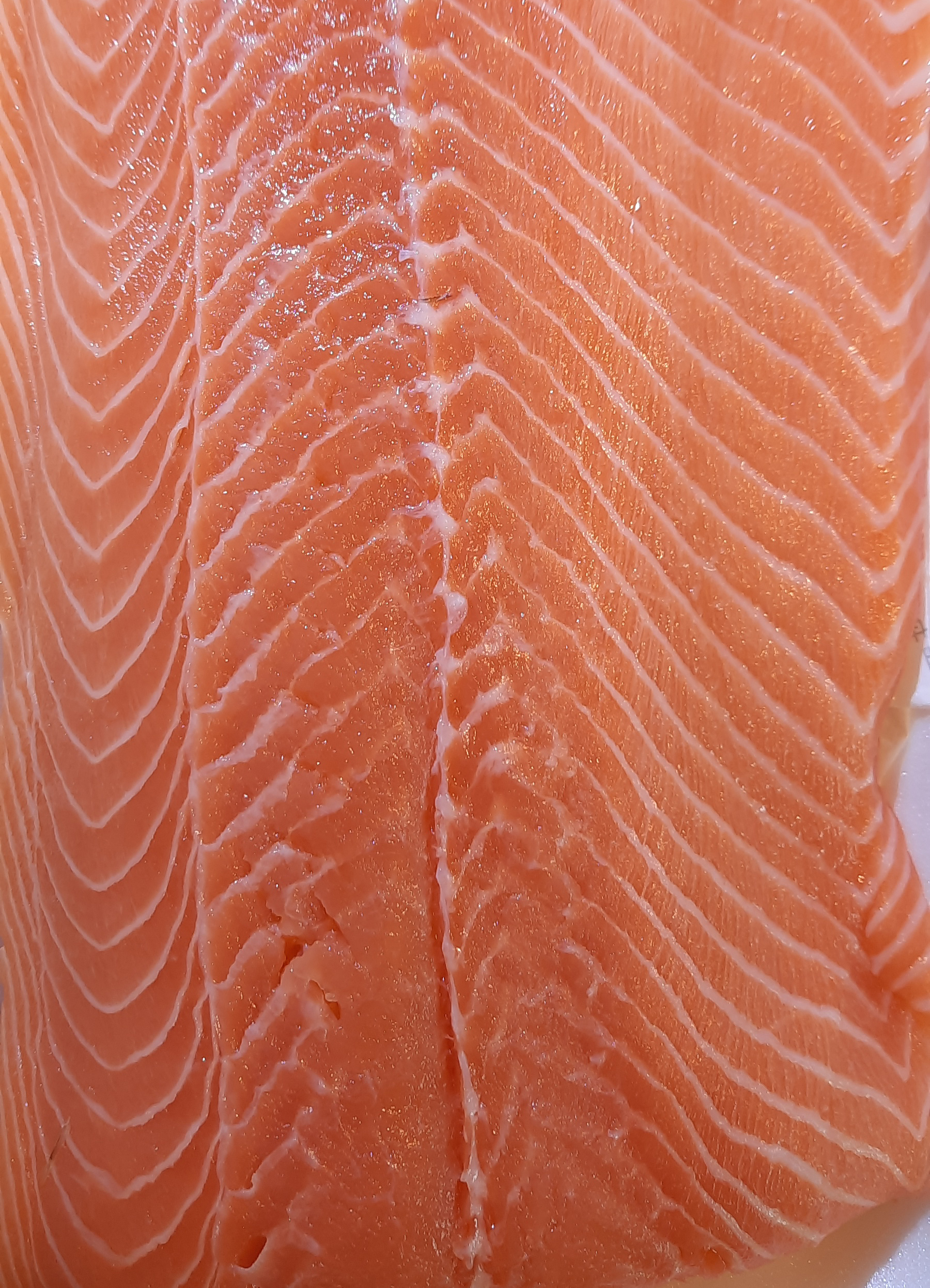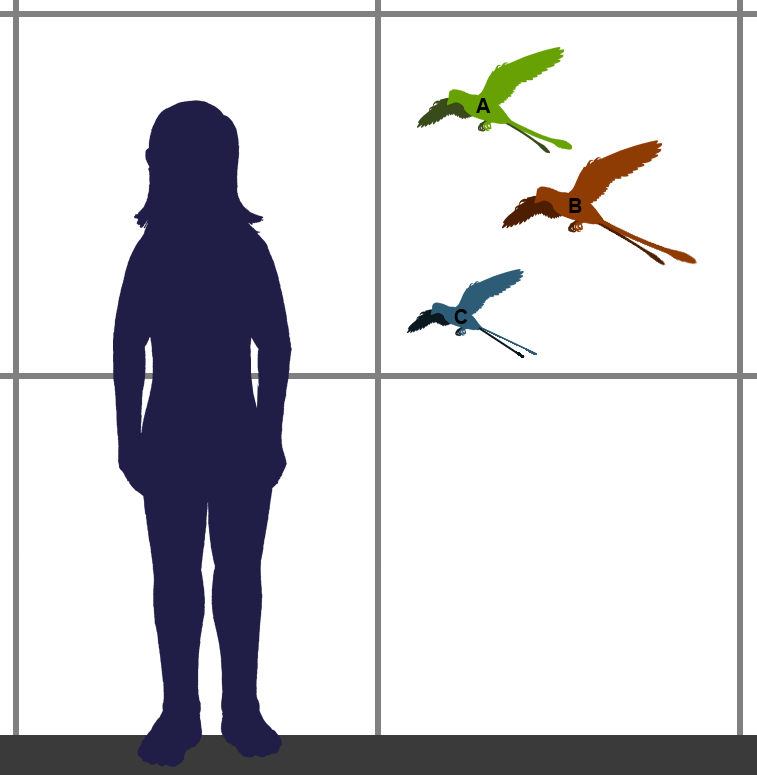|
Meristic
Meristics is an area of zoology and botany which relates to counting quantitative features of animals and plants, such as the number of fins or scales in fish. A meristic (countable trait) can be used to describe a particular species, or used to identify an unknown species. Meristic traits are often described in a shorthand notation called a ''meristic formula''. Meristic characters are the countable structures occurring in series (e.g. myomeres, vertebrae, fin rays). These characters are among the characters most commonly used for differentiation of species and populations. In the salmonids, scale counts have been most widely used for the differentiation of populations within species. In rainbow and steelhead trout the most notable differences among populations occur in counts of scales. Meristic comparison is used in phenetic and cladistic analysis. Meristic analysis A meristic study is often a difficult task. For example, counting the features of a fish is not as easy as it m ... [...More Info...] [...Related Items...] OR: [Wikipedia] [Google] [Baidu] |
Myomere
Myomeres are blocks of skeletal muscle tissue arranged in sequence, commonly found in aquatic chordates. Myomeres are separated from adjacent myomeres by fascia consisting of connective tissue, known as myosepta. Myomere counts are sometimes used for identifying specimens using meristics, since their number corresponds to the number of vertebrae in the adults. Myomere location varies, with some species containing these only near the tails, while some have them located near the scapular or pelvic girdles. Depending on the species, myomeres could be arranged in an epaxial or hypaxial manner; hypaxial refers to ventral muscles (those of the "stomach" region) and related structures, while epaxial refers to more dorsal muscles (those of the "back"). The horizontal septum divides these two regions in vertebrates from cyclostomes (jawless lamprey and hagfish) to gnathostomes (jawed fish). In terrestrial chordates, which are gnathostomes themselves, the myomeres become fused as well ... [...More Info...] [...Related Items...] OR: [Wikipedia] [Google] [Baidu] |
Zoology
Zoology ( , ) is the scientific study of animals. Its studies include the anatomy, structure, embryology, Biological classification, classification, Ethology, habits, and distribution of all animals, both living and extinction, extinct, and how they interact with their ecosystems. Zoology is one of the primary branches of biology. The term is derived from Ancient Greek , ('animal'), and , ('knowledge', 'study'). Although humans have always been interested in the natural history of the animals they saw around them, and used this knowledge to domesticate certain species, the formal study of zoology can be said to have originated with Aristotle. He viewed animals as living organisms, studied their structure and development, and considered their adaptations to their surroundings and the function of their parts. Modern zoology has its origins during the Renaissance and early modern period, with Carl Linnaeus, Antonie van Leeuwenhoek, Robert Hooke, Charles Darwin, Gregor Mendel a ... [...More Info...] [...Related Items...] OR: [Wikipedia] [Google] [Baidu] |
Bony Fish
Osteichthyes ( ; ), also known as osteichthyans or commonly referred to as the bony fish, is a Biodiversity, diverse clade of vertebrate animals that have endoskeletons primarily composed of bone tissue. They can be contrasted with the Chondrichthyes (cartilaginous fish) and the extinct placoderms and acanthodians, which have endoskeletons primarily composed of cartilage. The vast majority of extant taxon, extant fish are members of Osteichthyes, being an extremely diverse and abundant group consisting of 45 order (biology), orders, over 435 family (biology), families and 28,000 species. The group is divided into two main clades, the ray-finned fish (Actinopterygii, which makes up the vast majority of extant fish) and the lobe-finned fish (Sarcopterygii, which gave rise to all land vertebrates, i.e. tetrapods). The oldest known fossils of bony fish are about 425 million years old from the late Silurian, which are also transitional fossils showing a dentition, tooth pattern th ... [...More Info...] [...Related Items...] OR: [Wikipedia] [Google] [Baidu] |
Ichthyology
Ichthyology is the branch of zoology devoted to the study of fish, including bony fish (Osteichthyes), cartilaginous fish (Chondrichthyes), and jawless fish (Agnatha). According to FishBase, 35,800 species of fish had been described as of March 2025, with approximately 250 new species described each year. Etymology The word is derived from the Ancient Greek words ἰχθύς, ''ikhthus'', meaning "fish"; and λόγος, ''logos'', meaning "study". History The study of fish dates from the Upper Paleolithic Revolution (with the advent of "high culture"). The science of ichthyology was developed in several interconnecting epochs, each with various significant advancements. The study of fish receives its origins from humans' desire to feed, clothe, and equip themselves with useful implements. According to Michael Barton, a prominent ichthyologist and professor at Centre College, "the earliest ichthyologists were hunters and gatherers who had learned how to obtain the most use ... [...More Info...] [...Related Items...] OR: [Wikipedia] [Google] [Baidu] |
Morphometrics
Morphometrics (from Greek μορΦή ''morphe'', "shape, form", and -μετρία ''metria'', "measurement") or morphometry refers to the quantitative analysis of ''form'', a concept that encompasses size and shape. Morphometric analyses are commonly performed on organisms, and are useful in analyzing their fossil record, the impact of mutations on shape, developmental changes in form, covariances between ecological factors and shape, as well for estimating quantitative-genetic parameters of shape. Morphometrics can be used to quantify a trait of evolutionary significance, and by detecting changes in the shape, deduce something of their ontogeny, function or evolutionary relationships. A major objective of morphometrics is to statistically test hypotheses about the factors that affect shape. "Morphometrics", in the broader sense, is also used to precisely locate certain areas of organs such as the brain, and in describing the shapes of other things. Forms Three general appro ... [...More Info...] [...Related Items...] OR: [Wikipedia] [Google] [Baidu] |
Gill Arch
Branchial arches or gill arches are a series of paired bony/ cartilaginous "loops" behind the throat ( pharyngeal cavity) of fish, which support the fish gills. As chordates, all vertebrate embryos develop pharyngeal arches, though the eventual fate of these arches varies between taxa. In all jawed fish (gnathostomes), the first arch pair (mandibular arches) develops into the jaw, the second gill arches (the hyoid arches) develop into the hyomandibular complex (which supports the back of the jaw and the front of the gill series), and the remaining posterior arches (simply called branchial arches) support the gills. In tetrapods, a mostly terrestrial clade evolved from lobe-finned fish, many pharyngeal arch elements are lost, including the gill arches. In amphibians and reptiles, only the oral jaws and a hyoid apparatus remains, and in mammals and birds the hyoid is simplified further to support the tongue and floor of the mouth. In mammals, the first and second pharyngea ... [...More Info...] [...Related Items...] OR: [Wikipedia] [Google] [Baidu] |
Urostyle
Each vertebra (: vertebrae) is an irregular bone with a complex structure composed of bone and some hyaline cartilage, that make up the vertebral column or spine, of vertebrates. The proportions of the vertebrae differ according to their spinal segment and the particular species. The basic configuration of a vertebra varies; the vertebral body (also ''centrum'') is of bone and bears the load of the vertebral column. The upper and lower surfaces of the vertebra body give attachment to the intervertebral discs. The posterior part of a vertebra forms a vertebral arch, in eleven parts, consisting of two pedicles (pedicle of vertebral arch), two laminae, and seven processes. The laminae give attachment to the ligamenta flava (ligaments of the spine). There are vertebral notches formed from the shape of the pedicles, which form the intervertebral foramina when the vertebrae articulate. These foramina are the entry and exit conduits for the spinal nerves. The body of the vertebra an ... [...More Info...] [...Related Items...] OR: [Wikipedia] [Google] [Baidu] |
Pelvic Fin
Pelvic fins or ventral fins are paired fins located on the ventral (belly) surface of fish, and are the lower of the only two sets of paired fins (the other being the laterally positioned pectoral fins). The pelvic fins are homologous to the hindlimbs of tetrapods, which evolved from lobe-finned fish during the Middle Devonian. Structure and function Structure In actinopterygians, the pelvic fin consists of two endochondrally-derived bony girdles attached to bony radials. Dermal fin rays ( lepidotrichia) are positioned distally from the radials. There are three pairs of muscles each on the dorsal and ventral side of the pelvic fin girdle that abduct and adduct the fin from the body. Pelvic fin structures can be extremely specialized in actinopterygians. Gobiids and lumpsuckers modify their pelvic fins into a sucker disk that allow them to adhere to the substrate or climb structures, such as waterfalls. In priapiumfish, males have modified their pelvic structures into ... [...More Info...] [...Related Items...] OR: [Wikipedia] [Google] [Baidu] |
Ventral Fin
Pelvic fins or ventral fins are paired fins located on the ventral (belly) surface of fish, and are the lower of the only two sets of paired fins (the other being the laterally positioned pectoral fins). The pelvic fins are homologous to the hindlimbs of tetrapods, which evolved from lobe-finned fish during the Middle Devonian. Structure and function Structure In actinopterygians, the pelvic fin consists of two endochondrally-derived bony girdles attached to bony radials. Dermal fin rays (lepidotrichia) are positioned distally from the radials. There are three pairs of muscles each on the dorsal and ventral side of the pelvic fin girdle that abduct and adduct the fin from the body. Pelvic fin structures can be extremely specialized in actinopterygians. Gobiids and lumpsuckers modify their pelvic fins into a sucker disk that allow them to adhere to the substrate or climb structures, such as waterfalls. In priapiumfish, males have modified their pelvic structures into a spiny ... [...More Info...] [...Related Items...] OR: [Wikipedia] [Google] [Baidu] |
Pectoral Fins
Fins are moving appendages protruding from the body of fish that interact with water to generate thrust and help the fish swim. Apart from the tail or caudal fin, fish fins have no direct connection with the back bone and are supported only by muscles. Fish fins are distinctive anatomical features with varying structures among different clades: in ray-finned fish (Actinopterygii), fins are mainly composed of bony spines or rays covered by a thin stretch of scaleless skin; in lobe-finned fish (Sarcopterygii) such as coelacanths and lungfish, fins are short rays based around a muscular central bud supported by jointed bones; in cartilaginous fish (Chondrichthyes) and jawless fish (Agnatha), fins are fleshy " flippers" supported by a cartilaginous skeleton. Fins at different locations of the fish body serve different purposes, and are divided into two groups: the midsagittal ''unpaired fins'' and the more laterally located ''paired fins''. Unpaired fins are predominantly a ... [...More Info...] [...Related Items...] OR: [Wikipedia] [Google] [Baidu] |
Dorsal Fin
A dorsal fin is a fin on the back of most marine and freshwater vertebrates. Dorsal fins have evolved independently several times through convergent evolution adapting to marine environments, so the fins are not all homologous. They are found in most fish, in mammals such as whales, and in extinct ancient marine reptiles such as ichthyosaurs. Most have only one dorsal fin, but some have two or three. Wildlife biologists often use the distinctive nicks and wear patterns which develop on the dorsal fins of whales to identify individuals in the field. The bones or cartilages that support the dorsal fin in fish are called pterygiophores. Functions The main purpose of the dorsal fin is usually to stabilize the animal against rolling and to assist in sudden turns. Some species have further adapted their dorsal fins to other uses. The sunfish uses the dorsal fin (and the anal fin Fins are moving appendages protruding from the body of fish that interact with water to ge ... [...More Info...] [...Related Items...] OR: [Wikipedia] [Google] [Baidu] |
Dusky Spinefoot
The dusky spinefoot (''Siganus luridus''), also known as the squaretail rabbitfish, is a species of marine ray-finned fish, a rabbitfish belonging to the family Siganidae. It is native to the western Indian Ocean which has spread to the Mediterranean Sea through the Suez Canal (Lessepsian migration). Its fin spines contain venom. It is regarded as a food fish. Taxonomy The dusky spinefoot was first formally described in 1829 as ''Amphacanthus luridus'' by the German naturalist and explorer Eduard Rüppell with the type locality given as the Red Sea. The specific name ''luridus'' means “pale yellow”, this name was given to it by the collector of the type specimen, Christian Gottfried Ehrenberg, According to Achille Valenciennes in 1835, Ehrenberg described the colour of the body as yellowish-brown, with numerous very thin pale yellow lines. However, Rüppell said that the colour was bluish black with some irregular, paler spots and a yellowish ring around pupil in his descript ... [...More Info...] [...Related Items...] OR: [Wikipedia] [Google] [Baidu] |







